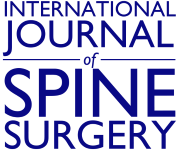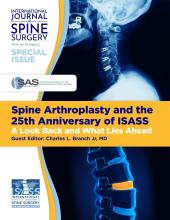Article Figures & Data
Tables
Agent Properties Efficacy Costs Challenges Opportunities Bone morphogenetic proteins Proteins involved in the differentiation of osteoblasts and chondroblasts Comparable and high High Variable fusion rates across different procedures, associated with serious complications New delivery methods to reduce dose-limiting effects; advantages outweigh risks in vulnerable population Platelet-rich plasma Contains growth factors Promising Unavailable Lack of standardization in research protocols High fusion rates Autologous conditioned serum Growth factors extracted from the patient’s serum Inconclusive Unavailable No evidence regarding improving fusion rates Cost-effective Demineralized bone matrix Graft extender containing growth factors Effective, but as an adjunct Lower than nonautologous graft materials but still relatively high Extreme variability in the number and types of products available for an accurate comparison, limited data for use in anterior spinal fusions Improved clinical outcomes, lower intraoperative blood loss, and improved physical function. Biomaterial scaffolds (ceramics and polypeptide-based compounds) Synthetic grafts made of osteoconductive materials Variable High Limited use in the anterior spine, increased resorption rates, brittle and weak in tension-based posterior spinal fusions High efficacy in spinal fusion, synthetic, biodegradable, nontoxic, and noninflammatory. Stem cells (mesenchymal and adipose-derived) Possessing autocrine and paracrine properties, effective for lineage progression and differentiation Limited studies in humans High Low yield of mesenchymal stem cells from bone marrow, difficulty in increasing their concentration in implanted grafts, potential risks associated with systemic viral or bacterial toxicity, immunity to certain viral strains, and ethical concerns surrounding genetic engineering and cell therapy. Improved postsurgery outcomes, comparable uptake, reduced healing time, comorbidities and systemic factors do not affect their outcomes adversely. Cellular bone matrices Osteoconductive grafts made by combining allogeneic bone with allogeneic stem cells Promising High Lack of FDA requirement for preclinical or clinical data before commercial usage, effective concentration threshold rates still unknown. High fusion rates Abbreviation: FDA, US Food and Drug Adminstration.
- Table 2
Cost comparisons and noninferiority evidence for various osteobiologics in 3 US states.
Osteobiologics Costs Across 3 States Cost Range Noninferiority Verdict Maryland New York California Bone morphogenetic proteins Infuse, large kit, 8 cc: $6,000 Medtronic extra small BMP: $2010 inFUSE large pack: $5100–5408 $$–$$$$ Superior effect in combination with autograft High costs justified Platelet-rich plasma $450–475 $ No evidence to establish noninferiority Low costs justified for trial exploration, not for routine use Demineralized bone matrix Optium, 10 g: $900 Stryker, 1 cc: $191 DBX: $576–$880, Grafton: $575–600 $ Noninferiority to autograft bone Low costs justified for independent use, avoiding autograft morbidity Biomaterial scaffolds Tricalcium phosphate Chronos, 10 g: $635 Stryker, 1.2 cc: $211 $ No evidence to establish noninferiority Not enough evidence to comment Bioactive glass Fibergraft, 10 g: $2,900 Stryker vitoss bioactive foam, 1.2 cc: $215 $-$$ No evidence to establish noninferiority Not enough evidence to comment Stem cells (mesenchymal and adipose-derived) Vivigen, 10 g: $3,300 Stryker bio4, 1 cc: $255 $–$$$ No evidence to establish noninferiority in spinal fusion Not enough evidence to comment Note: Costs are represented in US dollars ($). The cost range indicates the relative costliness of each biologic and is based on the following scale: <$1000: $, >$1000: $$, <$5000: $$$, >$5000: $$$$.







